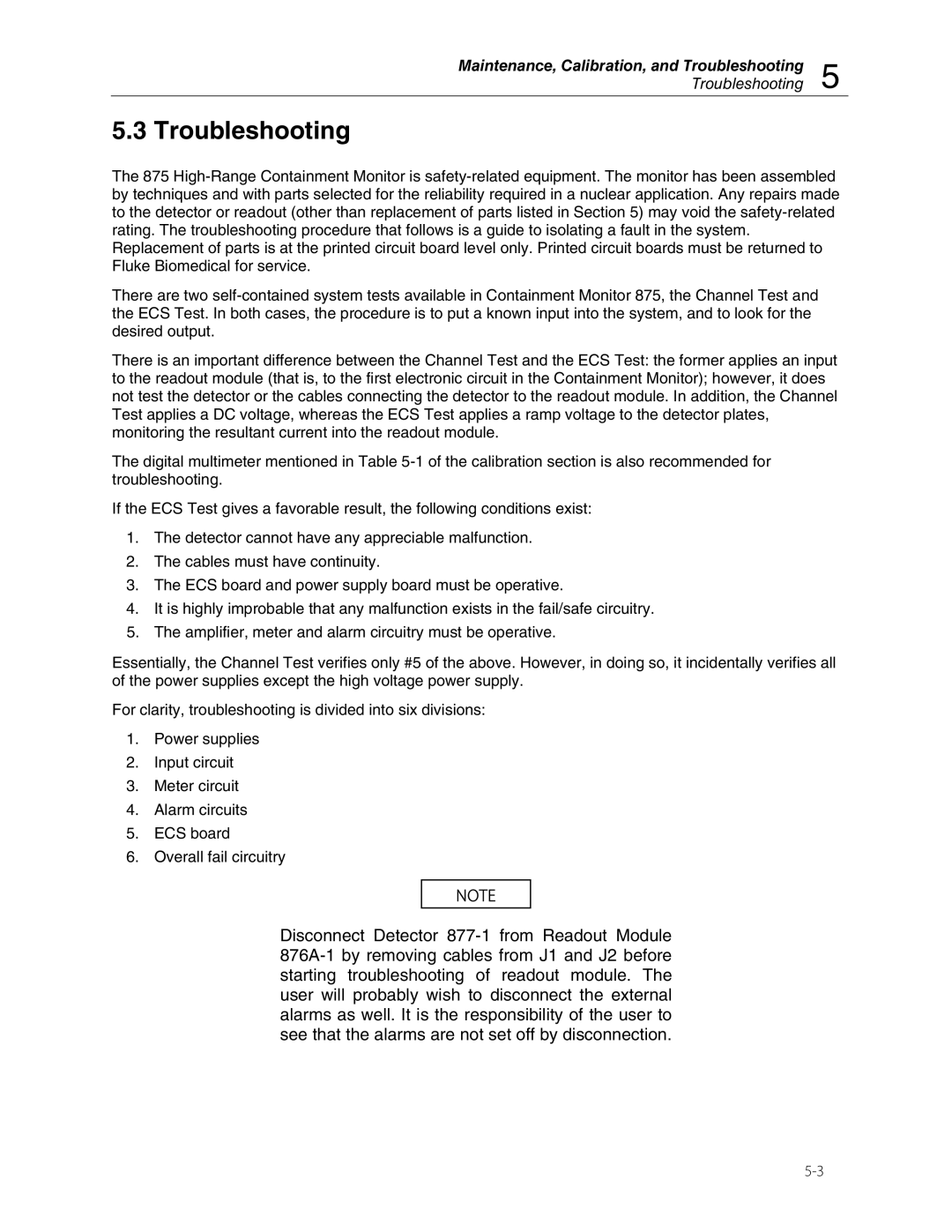
Maintenance, Calibration, and Troubleshooting
Troubleshooting 5
5.3 Troubleshooting
The 875
Replacement of parts is at the printed circuit board level only. Printed circuit boards must be returned to Fluke Biomedical for service.
There are two
There is an important difference between the Channel Test and the ECS Test: the former applies an input to the readout module (that is, to the first electronic circuit in the Containment Monitor); however, it does not test the detector or the cables connecting the detector to the readout module. In addition, the Channel Test applies a DC voltage, whereas the ECS Test applies a ramp voltage to the detector plates, monitoring the resultant current into the readout module.
The digital multimeter mentioned in Table
If the ECS Test gives a favorable result, the following conditions exist:
1.The detector cannot have any appreciable malfunction.
2.The cables must have continuity.
3.The ECS board and power supply board must be operative.
4.It is highly improbable that any malfunction exists in the fail/safe circuitry.
5.The amplifier, meter and alarm circuitry must be operative.
Essentially, the Channel Test verifies only #5 of the above. However, in doing so, it incidentally verifies all of the power supplies except the high voltage power supply.
For clarity, troubleshooting is divided into six divisions:
1.Power supplies
2.Input circuit
3.Meter circuit
4.Alarm circuits
5.ECS board
6.Overall fail circuitry
![]()
![]()
![]()
![]() NOTE
NOTE![]()
![]()
![]()
![]()
![]()
Disconnect Detector
